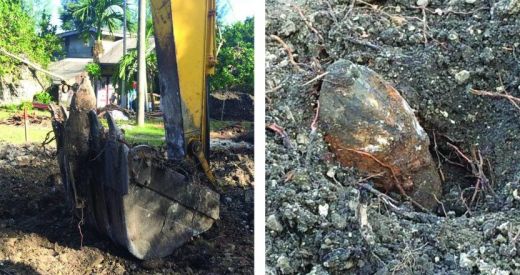Remembering Sabang bombing

Today (19 April) 74 years ago, places in Sabang devastated. The situation was caused by air bombardment by Allied forces through a Cockpit-coded operation.

Operation Cockpit backed by the request of the United States Navy (US) who require a diversion operation for its main operations to Hollandia (now Jayapura) is not disturbed. The operation of the transfer functioned to hold Japanese troops around the Strait of Malacca to move east.
For that purpose, in early April 1944, Admiral Ernest King (head of US Navy operations) met Adm. James Somerville (commander of the British Eastern Fleet). King asked whether the Eastern Fleet could make the desired operation.
Somerville undertakes. He, who designed and led the diversion operation, chose Sabang as the target of the operation. In addition to the entrance to the Malacca Strait, Sabang is a strategic point for being Japan's main supplier of oil and logistics troops in Burma. By crippling ports, radar stations, airports, radio stations and oil facilities in Sabang, the Allies could cut off Japan's oil and logistics supplies in Burma.
To achieve that purpose, Somerville emphasized operations on air strikes. The operation, April 19, will be run by two combat units: Force 69 and Force 70. Force 69 is a flagship, the place where the Somerville-bound HMS Queen Elizabeth warship is. While Force 70, is a core strength. In Force 70 two aircraft carriers -HMS Illustrious and USS Saratoga- are located.
They started moving from Trincomalee in northern Sri Lanka on April 16. "The flight position of 180 miles southwest of Sabang was reached at 5:30 am on April 19, 1944," David Hobbs wrote in The British Pacific Fleet: The Royal Navy's Most Powerful Strike Force.
The Poor weather where low clouds forced both Allied carriers to move at their own pace at full speed. However, in that case, they are still launching 46 bombers and 37 fighter aircraft that directly bomb the harbor and the ships that lean in it. Army barracks, radar stations, communications facilities, oil depot tanks, power plants and air bases following 24 fighter planes followed suit became victims shortly thereafter.
The Japanese military personnel, mostly still asleep, were not immediately shocked. "When they succeeded in using anti-aircraft weapons, everything has been destroyed. They only managed to shoot down an Allied plane, "Horst H. Geerken wrote in Hitler's Asian Adventure.
Somerville troops wrestled at 9 am and went straight back to Trincomalee. In addition to crippling Sabang's vital facilities, Operation Cockpit took the casualties of one sinking commercial ship and one other ship heavily damaged, two destroyer ships and two Japanese Navy escorts ablaze. Three fighter planes and three Japanese Navy torpedo planes fell victim while trying to fight.